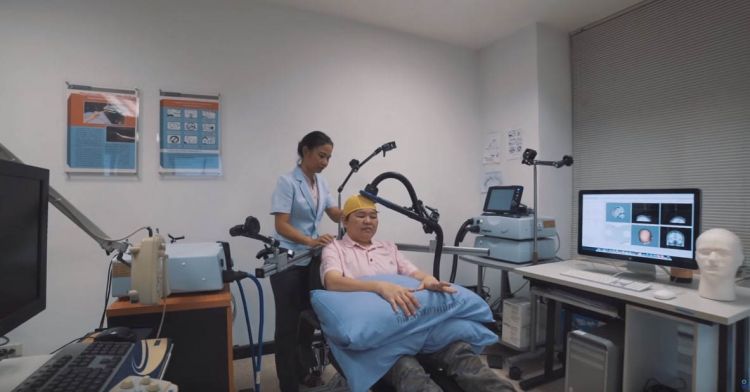Transcranial Magnetic Stimulation for Stroke Recovery

Globally, cerebrovascular accidents, or stroke, are the second leading cause of death and the third leading cause of disability. Seventy percent of strokes, and an even higher proportion of both stroke-related deaths and disability-adjusted life years, occur in low and middle-income countries, with the incidents in these countries more than doubling over the past four decades.
Stroke occurs when the blood flow to the brain is lost due to a blockage or rupture of an artery, resulting in the sudden death of some brain tissue. For those who survive, they will almost certainly face effects such as problems controlling movement, sensory disturbances such as pain, problems using or understanding language, cognitive and memory problems, or emotional disturbances. The nature of such disabilities will depend on the region of the brain which is affected by the stroke.
One of the most common disabilities resulting from stroke is paralysis, which can affect the face, an arm, a leg, or an entire side of the body; and only 5% of stroke survivors regain full arm function. This difficulty with moving an arm and grasping objects has a significant effect on a person’s independence, and their ability to perform everyday tasks.

The Faculty of Physical Therapy, Mahidol University, has been performing a series of clinical trials on the effects of repetitive Transcranial Magnetic Stimulation (rTMS) on the physical rehabilitation of stroke survivors suffering from reduced arm function. Transcranial Magnetic Stimulation is a non-invasive and painless treatment which involves stimulation of the brain using an electromagnetic field.
Under normal circumstances, a patient would take part in motor training, practicing activities, with a physical therapist every two days in order to continue improving. When using TMS alone, the resultant improvement of motor function lasts only one or two hours. However, when 20 minutes of TMS is followed by an hour and a half of task specific training, the effects will last for approximately two weeks, allowing the patient to spend less time commuting to undergo their physical therapy.
The Faculty of Physical Therapy are currently aiming to expand this treatment beyond their trial of 100 subjects, and into wider clinical use. In addition, they are starting to look at the possible applications of rTMS to treat other neurological conditions, such as Parkinson’s disease Autistic Spectrum Disorder. The Faculty has also begun to include this treatment in their postgraduate programs, ensuring that this new body of knowledge is not isolated to the laboratory.

Assoc. Prof. Jarugool Tretriluxana of the Faculty of Physical Therapy, and a lead researcher on the project, said that this research is not only helping the stroke patients themselves, but the benefits extend to their care-givers and family, allowing them all to live more normal lives, and to the wider society as well.